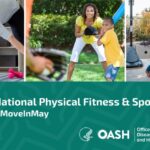Hurricane Katrina: What we learned, Then and Now
By Karen DeSalvo, Former Acting Assistant Secretary for Health, U.S. Department of Health and Human Services
This story was published in Ready or Not? 2017.
There are a significant amount of vital lessons that need to and have been learned from the preparation for, response to, and recovery from Hurricane Katrina. One long-term lesson that I think is worth highlighting and has shown its importance during recent weather-related emergencies is the need for public health to take a significant leadership and coordinator role before, during and after an emergency.
In the immediate aftermath of Hurricane Katrina, it was evident that connections were missing—whether it be local public health to state officials, public health to first responders, or public health to the community.
Public health leaders simply weren’t the chief health strategists for their communities. The field was focused on an important set of discrete responsibilities or program but not on the need to build connections with community leaders, first responders and other critical infrastructure that could ensure people had safe places to go and access to medications and other critical supports.
With this realization, it was apparent public health had to connect more with the full gamut of organizations and people involved with an emergency response. And, since then, we have done so not only in New Orleans, but in communities across the country.
For example, during subsequent hurricanes in New Orleans, public health was able to work directly and quickly with hospitals and other care facilities to know if power was on and what beds and medications were available.
And, if you look at the response in Houston, you’ll note that public health was everywhere. They were in communities meeting people and alerting them to potential dangers and infectious diseases, what food and water was safe, etc. And, they were all over social media in a culturally competent way, reaching more and more people.
If you compare the Houston Harvey response to Katrina, it should be apparent that one of the benefits in Houston was the high level of connectedness between public health and the community they serve.
How we can better Prepare for the Next Emergency
In addition to public health continuing to be the coordinator for health for our communities in disaster and every day, to better respond to the next public health emergency, the nation needs to:
- Expand funding;
- Improve the foundational capabilities of public health;
- Better leverage technology;
- Increase training; and
- Focus on the underlying health and resiliency of our communities—particularly those who are most vulnerable.
We need more funding for public health—we need public health departments at the local and state levels to have the foundational capabilities required to respond to public health emergencies but also to help build resilience between events. These funds can’t be categorical, they have to provide core funding that can be nimble for a community to address their biggest health needs. For instance, parts of California might be more prone to wildfires while the Gulf Coast needs to focus on hurricanes. If we don’t have these capabilities in place, we’re forcing our public health workers to just react, rather than prepare to respond.
We also need more funding to go directly to local health departments. States have a huge responsibility during an emergency and often can’t funnel as many resources as you’d think to the local level. During Katrina, we saw this front and center.
While more funding is important, it must be paired with concrete expectations and accountability. Every single health department in the country should be accredited which will help ensure that they can stand up emergency operations when necessary.
When Katrina hit, we were using flip phones, Blackberries and an early version of Google maps. We’ve come a long way with technology in little over a decade, but our preparedness hasn’t quite kept up. We must do better with technology.
We have a great start with this by better leveraging the Department of Health and Human Services’ emPOWER, an online tool that houses and provides Medicare claims data to hospitals, first responders, and health officials to help map the electricity needs during an emergency. emPOWER enables responders to prioritize evacuations and can identify vulnerable populations who will need follow-up services. But it’s limited to the Medicare population. This type of tool must be expanded to or created for Medicaid and, where appropriate, private payers. First responders and public health must have real-time population level data.
An additional reason more resources are needed is to increase drills and training that specifically focuses on local leadership and the U.S. Public Health Service Commissioned Corps. Annually, public health workers should drill in a vulnerable area alongside the Commissioned Corps—an invaluable resource. Currently, when the Commissioned Corps deploys to an emergency the connections with local responders aren’t there and often the Commissioned Corps can be underutilized.
Lastly, we simply must do more to improve the resiliency of our communities. The healthier a group of people are, the better they respond to an emergency.
In-between emergencies, public health must use data and find opportunities to engage more with vulnerable populations. For example, this could include creating pilot programs with Medicare providers, home health organizations and others involved with the care of older adults. We must improve the health of our older population and, at the same time, have the processes in place that can maintain their connection to care during an emergency that might result in evacuations and/or loss of power.
The nation’s preparedness has improved immensely since Hurricane Katrina—we must keep improving.
